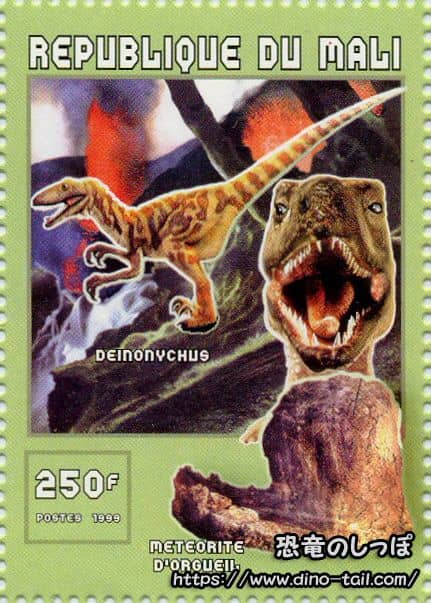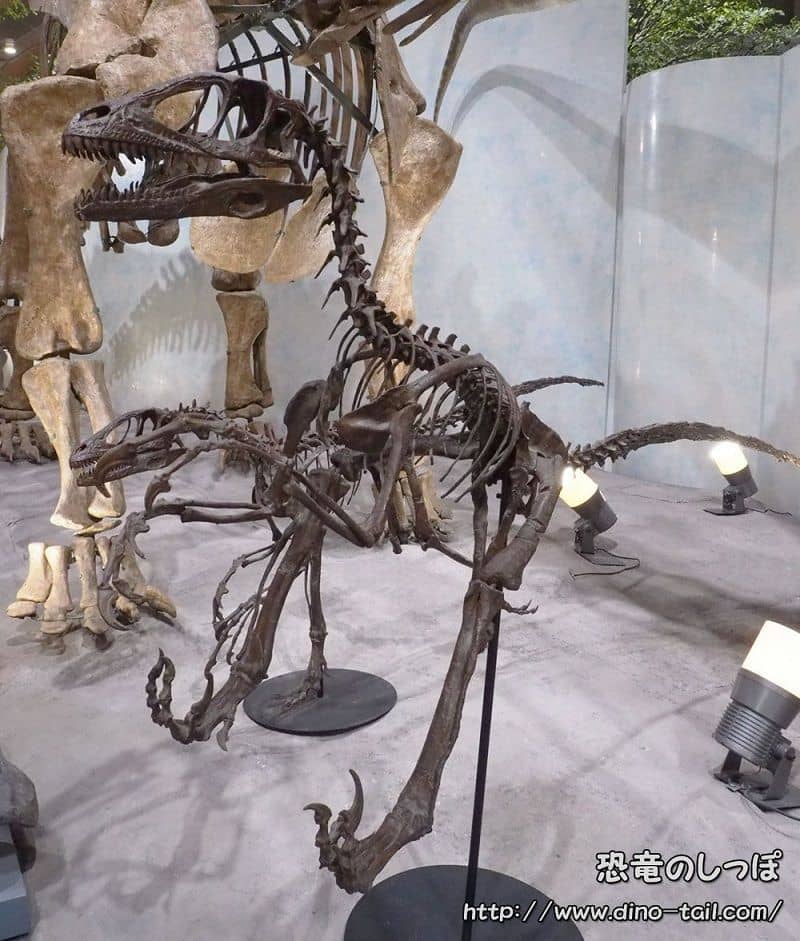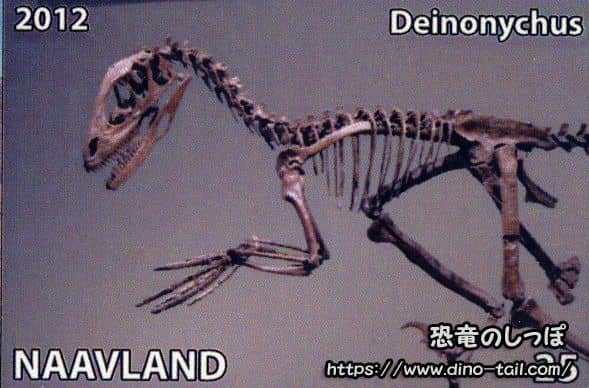About Deinonychus
| Scientific Name (Genus) | Deinonychus |
| Meaning of Name |
Terrible claw
deinos (terrible) [Greek] - onyx (claw) [Greek] |
| Classification | Saurischia, Theropoda (Tetanurae) |
| Total Length | Approx. 2.5 - 4m |
| Diet | Carnivorous |
| Period | Early Cretaceous (approx. 115-108 million years ago) |
| Species | Deinonychus antirrhopus |
| Year of Paper Publication | 1969 |
| Genus Name Publication | Ostrom, John H. (1969). Osteology of Deinonychus antirrhopus, an unusual theropod from the Lower Cretaceous of Montana. Peabody Museum of Natural History Yale University Bulletin, 30. |
Characteristics
What made Deinonychus famous is that it sparked the development of the "dinosaur warm-blooded theory."
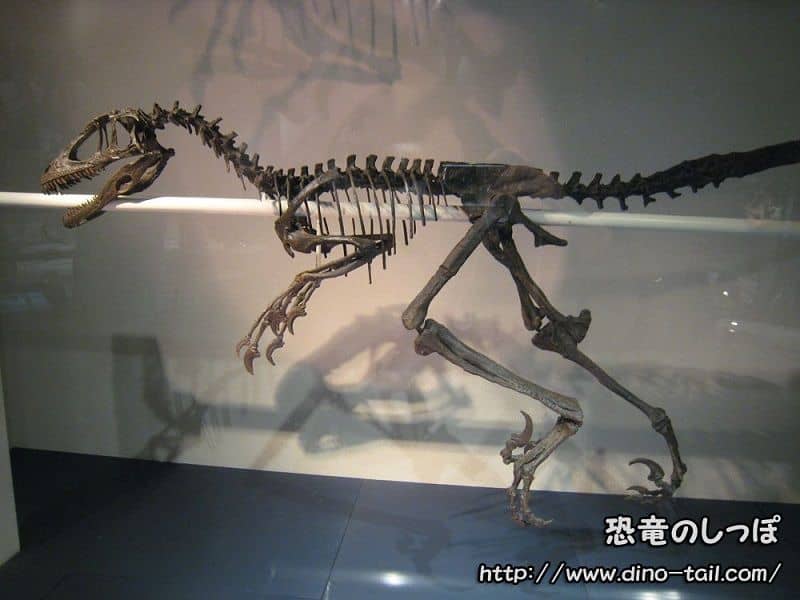
The discovery of Deinonychus changed the prevailing view of dinosaurs. Based on its brain size, skeletal structure, and other features, it was thought to have been very active.
Since fossils of multiple individuals are often found mixed with those of large herbivorous dinosaurs, it is speculated that they "hunted in packs, moving with agility to attack large plant-eating dinosaurs."
In one specimen, the third finger claw of the left hand of another Deinonychus was found embedded in a part of its tail vertebrae. A 2007 research paper suggests this could be evidence of fighting between Deinonychus (or even cannibalism).
The True Use of the "Terrible Claw": A Commonality with Birds of Prey

The claw on the second toe was a weapon for capturing prey.
The large claw on the second toe of its hind foot had a wide range of motion and was held up off the ground when walking. This enormous sickle claw, up to 15cm long and the source of its name, was once thought to be used for slashing prey, influenced by movies. However, recent studies have shown that its shape was not well-suited for "slashing."
The currently most accepted theory is that its method of capture was similar to that of modern birds of prey like eagles and hawks. It is believed that Deinonychus would leap onto its prey, use its body weight to pin it down, and then use its terrible claw to pierce and restrain the prey, preventing its escape. Meanwhile, it might have used its sharp teeth to deliver the final blow.
A Stiff Tail for Balance: It is also known that the tail of Deinonychus was stiffened and made rigid by ossified tendons. This tail served as an important "counterweight" to maintain balance while leaping onto or pinning down prey.
The Beginning of the Dinosaur Warm-Blooded Theory
What makes Deinonychus famous is that it triggered the development of the "dinosaur warm-blooded theory."
Discovered in 1964, Deinonychus was thought to have been very active based on its brain size, skeletal structure, and other features.
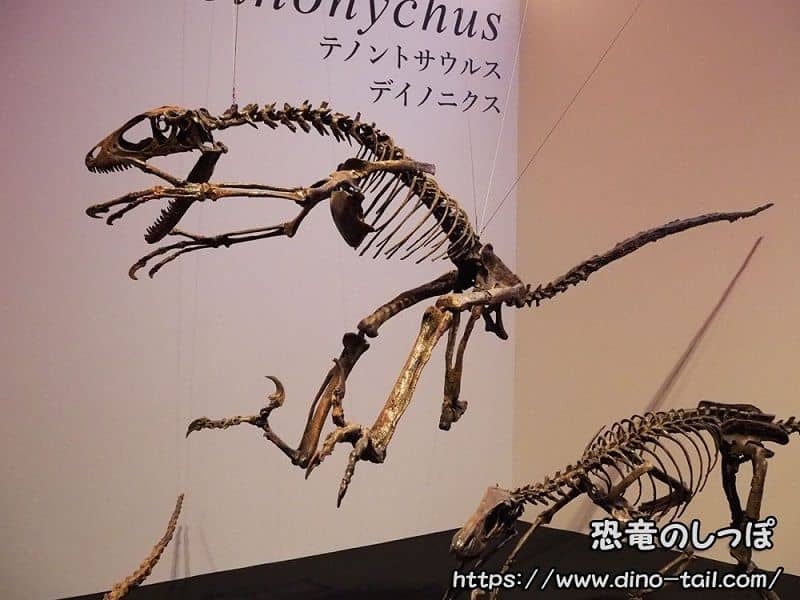
Paleontologist John Ostrom, who described Deinonychus, thought that "for an animal 2.5 - 4m long and weighing 50-100kg to move actively, it would be impossible if it were ectothermic/cold-blooded like modern reptiles."
This became the catalyst for the "dinosaur warm-blooded theory."
For a long time, there was no physical evidence to support the warm-bloodedness/endothermy of dinosaurs, but recently, with the discovery of "feathered dinosaurs" and a succession of research findings pointing to similarities with birds, it has become the consensus that "some dinosaurs were warm-blooded/endothermic." This is a dinosaur that rewrote the history of dinosaur research.
Recently, reconstructions of Deinonychus are often depicted with feathers.
Discovery and Publication
Deinonychus fossils have been found in the Cloverly Formation, which spans Montana and Wyoming in the USA, and the Antlers Formation in Oklahoma.
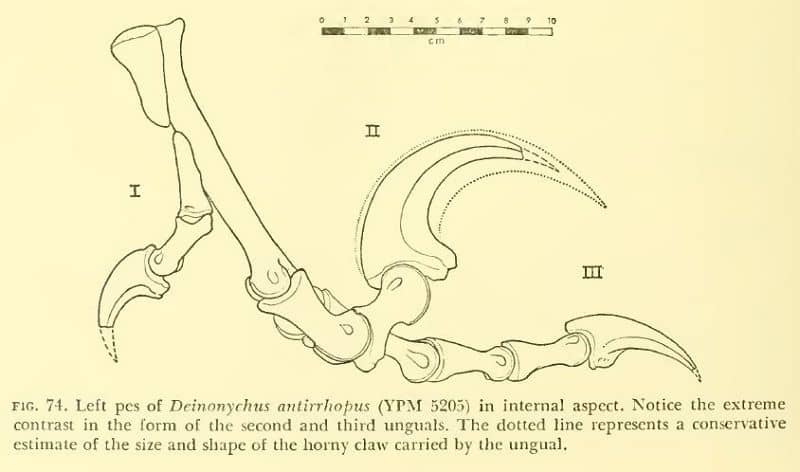
Source: Ostrom, John H. (1969). Osteology of Deinonychus antirrhopus, an unusual theropod from the Lower Cretaceous of Montana. Peabody Museum of Natural History Yale University Bulletin, 30.
The first specimen of Deinonychus was discovered in Montana in 1931 by paleontologist Barnum Brown. However, Brown unofficially called this specimen Daptosaurus (at the time, Brown's interest was in the ornithopod dinosaur Tenontosaurus, which he was investigating at the same site).
In 1964, paleontologist John Ostrom joined a Yale University excavation and discovered fragmentary fossils of three small carnivorous dinosaurs. Based on these specimens (such as YPM 5205), he described the new genus Deinonychus in 1969. Later, Ostrom analyzed the Daptosaurus excavated by Barnum Brown in 1931 in detail and found it to be the same species, reclassifying it as Deinonychus.
In 1974, a well-preserved specimen of Deinonychus (MCZ 4371) was excavated by a Harvard University expedition. After seeing this specimen, John Ostrom revised his reconstruction drawings.
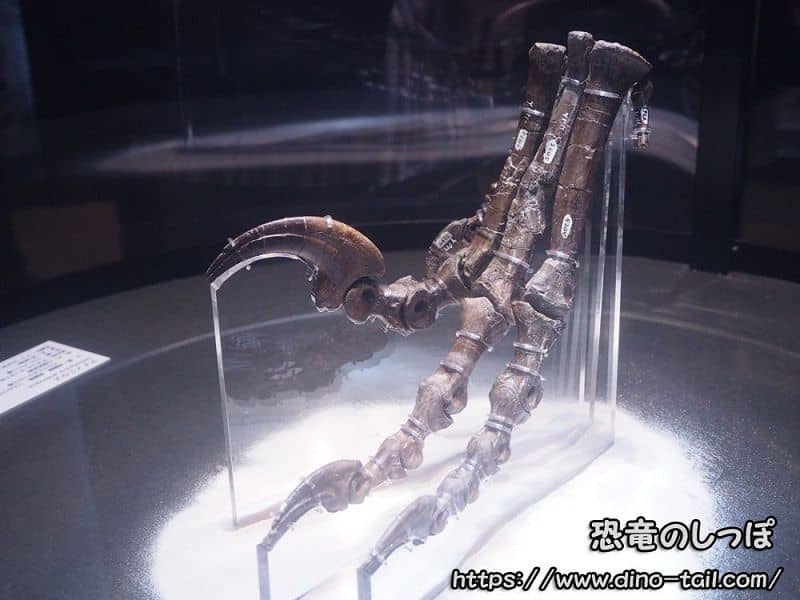
Deinonychus Stamp & Fossil Gallery
